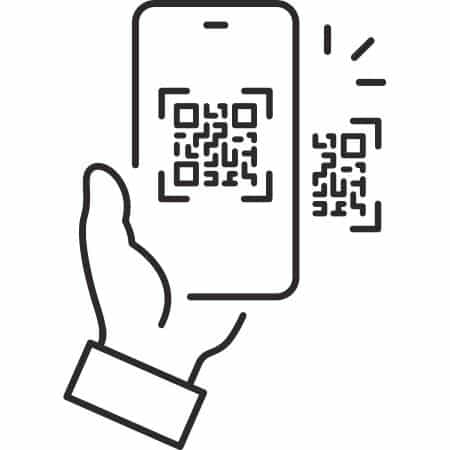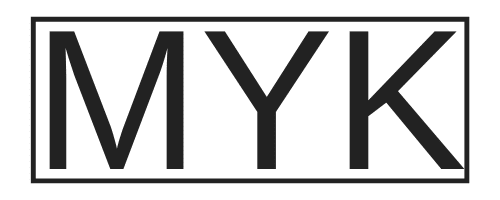QR Code Business Cards – Ultimate How-To Guide
Welcome to the ultimate guide on QR codes for business cards! In today’s fast-paced digital era, traditional business cards are getting a modern makeover with the integration of QR codes. I have personally experienced QR codes’ power and convenience in networking and business interactions. In this comprehensive guide, I’ll walk you through everything you need about using QR code business cards to enhance your professional presence, connect with potential clients or partners, and make a lasting impression.
In recent years, QR code business cards have gained immense popularity due to their ability to bridge the gap between physical and digital realms seamlessly. With a quick scan using a smartphone or other compatible device, QR codes unlock a world of information, enabling instant access to websites, contact details, social media profiles, and much more. They have become a valuable tool for businesses, empowering entrepreneurs and professionals to share their information effortlessly and engage with their audience dynamically and interactively. Throughout this guide, I’ll delve into the ins and outs of incorporating QR codes into your business cards, sharing practical tips, industry insights, and real-life examples to help you fully harness their potential.
How QR Codes Work

A QR code is a two-dimensional barcode that you can easily scan with a smartphone or compatible device to access digital data quickly. The black and white squares of the code are small encoded dots that direct scanners to a specific website, contact details, social media pages, videos, documents, etc. When someone scans your QR code business card, they can immediately view all the details you have added to the code.
The Benefits of Using QR Code Business Cards
Let’s face it; physical business cards are becoming a thing of the past. Deciding to put a QR code on your business card is an innovative way to update your networking. Whether you still use traditional paper cards or have upgraded to digital business cards, QR codes will improve your networking skills and help better engage prospects. Here are some of the most significant advantages of using QR code business cards:
The Convenience Factor
No more fumbling around trying to input phone numbers or email addresses manually. A simple scan of your business card’s QR code instantly adds all relevant contact details to their device.
Digital Versatility
You’re not limited to just sharing your name and phone number anymore. Your digital business card can include company website links, social media profiles, or promotional materials like videos and presentations.
Eco-Friendly Alternative
Tired of wasting paper on physical cards that end up in the trash? Using a free digital business card with a QR code will reduce waste while making a lasting impression on potential clients.
Bonus: Dynamic Updates & Tracking Analytics
- Dynamic QR Code: Create a dynamic QR code that allows you to update linked content without changing the printed code – perfect for keeping promotions fresh.
- Analytical Insights: Allow you to gather valuable data and understand your audience better and improve marketing strategies.
Are you convinced yet? Let’s move on to creating a QR code for your business card.
Create a QR Code for Your Business Card

Are you ready to take your business card game to the next level? Let’s create a unique QR code that will link potential customers directly to your contact information or website. This process is easier than you think.
Create Your Unique QR Code
Step #1: Choose a free online QR code generator.
Step #2: Input your desired destination, such as your phone number, email address, or website URL, into the QR code generator.
Step #3: Customize color or size using the QR code generator. This will help your QR code business card stand out and match your brand.
Step #4: Create and download your new QR code in an image format compatible with print materials, such as PNG. This will ensure that your QR code business card looks great.
Step #5: Design your business cards (I’m a big fan of Canva) and add the QR code.
Pick a Dynamic Option for Flexibility
If you’re looking for more flexibility in updating content without changing the physical appearance of the printed code itself, consider using dynamic QR codes. These QR codes link to a URL that can be updated with new information.
Add Value Through Additional Features
You can also enhance the user experience by incorporating additional features like vCard compatibility or linking to multiple platforms through a single scan. Many QR platform solutions are available to find the perfect fit for your needs.
Note: a vCard QR code is a type of QR code that links to a virtual business card containing contact information.
Test Your QR Code Before Printing
Lastly, always test your QR code before printing it on your business cards. Scan it with a smartphone or tablet and ensure it works as intended. This will save you from any potential embarrassment or lost opportunities.
Design Your QR Code Business Card

It’s time to create an eye-catching QR code business card design that perfectly balances aesthetics and functionality. Let’s dive into some tips and tricks for designing a stunning business card with a QR code that stands out.
Choose the Right Layout
Pick a layout that allows ample space for your contact details and the QR code without cluttering it. Depending on your preference, a vertical or horizontal orientation can work wonders here.
Pick Complementary Colors
Select colors that represent your brand and ensure the readability of text and easy scanning of the QR code. Colors.co is an excellent tool for finding color schemes that work well together.
Use High-Quality Images & Logos
Incorporate high-resolution images or logos in vector format (such as SVG) to maintain sharpness when printed on physical cards.
Optimize Your Contact Information Placement
- Name: Your name should be prominently displayed so potential customers immediately know who they’re connecting with.
- Title/Position: Add this information below your name to establish your role within the company.
- Phone Number & Email: Include these contact details for easy accessibility, but don’t overcrowd the card. Less is more.
Incorporate Your QR Code
Add your QR code to your business card’s prominent location, ensuring it’s easily scannable. Avoid placing it too close to text or other design elements that might interfere with scanning.
Test and Print.
Before printing hundreds of cards, do a test print to ensure everything looks perfect and the QR code scans correctly. You can use online services like Vistaprint or local print shops.
Congratulations. You’ve just designed an impressive business card with a functional QR code that will surely grab attention and make networking easier.
Key Takeaway:
Designing a business card with a QR code can help you stand out from the crowd. Choose an appropriate layout, complementary colors, and high-quality images or logos to create an eye-catching design that incorporates your contact information and prominently displays the scannable QR code.
Promote Your QR Code Business Card

So, you’ve designed a stunning business card with a QR code. Now what? It’s time to promote it.
The goal is to get potential customers to scan and engage with your digital content. Here are some actionable tips for promoting your QR-coded business card effectively:
- Tactic #1: Share your business card at networking events or trade shows. This traditional method still works wonders, especially when combined with the modern touch of a QR code on your business cards.
- Tactic #2: Leverage social media platforms by sharing an image of your physical card or creating a digital version for online use. You can even include the business card’s QR code in profile pictures or cover photos to increase visibility and engagement.
- Tactic #3: Use email signatures as another opportunity to share your contact details along with the QR code link. This way, recipients can scan the code from their screens without needing a physical copy of the card itself.
- Tactic #4: If you have printed materials like brochures or flyers, incorporate them there too. This will help drive traffic to relevant information about yourself and the services offered.
Additionally, you can promote through partnerships by collaborating with other businesses complementary to yours and exchanging mutual promotion (e.g., joint workshops) where both parties benefit from increased exposure and audience reach.
Track the Results of Your QR Business Card
So, you’ve got your snazzy new QR code business card. Congratulations. Hold up – there’s more to do than simply distributing them and hoping for success. You need to track how well they’re working for you. Lucky for you, we have tips on effectively using analytics tools and data from your QR code scans.
Analyzing Your Data: The Basics
First, make sure you use dynamic QR codes, which allow tracking of scan statistics and easy updates without changing the printed code. This is crucial because static codes must provide insights into performance or user engagement levels.
Finding the Right Analytics Tools
The next step is finding an appropriate analytics tool that suits your needs – many QR code generators offer built-in analytics features as part of their services (sometimes free). If not, consider third-party options like Google Analytics or other specialized platforms specifically for tracking QR codes’ performance metrics, such as scans over time, location data, device types used by scanners, and more.
Digging Deeper Into Your Data: What To Look For?
- Total Scans: This shows how often your QR code has been scanned, giving you an idea of its overall reach.
- Unique Scans: This metric tells you how many individual users have scanned your code, which helps determine the effectiveness of your distribution strategy.
- Scan Locations: Knowing where people are scanning your codes can help identify potential markets or areas for targeted promotions and campaigns.
- Device Types: Understanding what devices (smartphones, tablets) are used to scan your codes can provide insights into user preferences and inform future design decisions.
Taking Action Based on Your Findings
Analyzing this data is crucial in understanding how well your business card’s QR code performs – but it continues beyond there. Take action based on these findings to optimize the performance further. Tweak designs/layouts if needed; adjust promotional strategies targeting specific locations/devices/users, and more.
FAQs
Is it Worth Putting a QR Code on a Business Card?
Yes, it is worth adding a QR code to your business card. A QR code can provide quick access to your website, social media profiles, or contact information. It saves space on the card and allows for easier sharing of digital content with potential clients or partners.
Can I Make a Business Card with a QR Code?
Absolutely. You can create a custom-designed business card with personal details and an embedded QR code. Many online design tools like Canva offer templates and features to help you easily create QR business cards.
Where is the Best Place to Put a QR Code on a Business Card?
The ideal location for placing the QR code depends on your overall design preferences; however, standard placements include the bottom corner or center of the backside of the card. This ensures easy scanning while maintaining other necessary information’s visual appeal and readability.
What is the Purpose of Using a QR Code in Businesses?
The primary purpose of using QR codes in businesses is to streamline communication by providing instant access to relevant digital content such as websites, promotional materials, contact information, or even payment options. They save time for both customers and employees while enhancing the user experience through seamless integration between physical and digital platforms.
Should I upgrade to a digital business card?
It depends on your business goals. Choosing a digital business card might be better if you want to save time and costs associated with printing physical cards. Digital cards are more cost-effective, easier to update, and can be quickly shared via email or social media. Creating a digital business card is relatively quick and easy, and many free options are available.
Conclusion
Using a QR code for your business card can be a game-changer in today’s digital world. By incorporating this technology, you can easily share contact information with potential customers and track the results of your marketing efforts.
Create a dynamic QR code using one of the many free online generators. Then, design your business card to include the QR code and promote it through various channels such as social media accounts or email signatures. Finally, track your campaign results by monitoring scans and engagement metrics.







